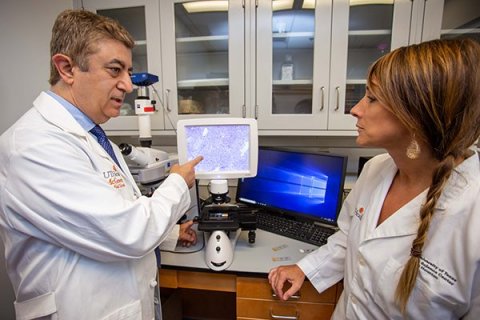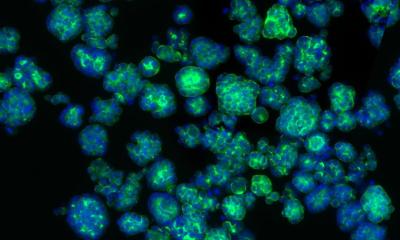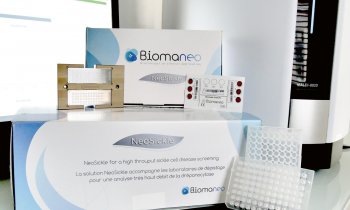News • Metabolic mystery solved
Why fatty livers are more susceptible to cancer
Fatty liver disease is contributing to an increase in liver cancer and basic scientists at The University of Texas Health Science at Houston (UTHealth) have new insight as to why.
Image souce: Shutterstock/Magic mine
In the journal Cancer Research, the investigators report that in mouse models, excess fat impairs the ability of a tumor-suppressing protein named HNF4α to do its job. “This study provides potential mechanisms for the growing incidence of liver cancer in both men and women that is linked to fatty liver disease,” said Kristin Eckel-Mahan, PhD, the study’s senior author and an assistant professor with the Center for Metabolic and Degenerative Diseases at the Brown Foundation Institute of Molecular Medicine for the Prevention of Human Diseases at UTHealth.

Photo: Maricruz Kwon/UTHealth
She hopes their discovery might eventually be used to identify fatty liver disease patients who have an elevated risk for developing liver cancer. This could potentially result in improved liver cancer screening. This year, liver cancer will claim almost 32,000 lives in the United States.
The researchers focused on a particularly deadly form of liver cancer known as hepatocellular carcinoma, which has recently been linked to nonalcoholic fatty liver disease. Historically, the rates of hepatocellular carcinoma have been much higher in men than women. Though still more common in men, fatty liver-associated hepatocellular carcinoma is increasing in women as well. In the study, Eckel-Mahan’s team found that hepatocellar carcinoma rates rose significantly when a high-fat diet was combined with the removal of the tumor suppressor protein HNF4α. When HNFAα is not expressed properly, it affects the biological clock in the liver. “It causes a circadian activation of genes that promote cell division,” Eckel-Mahan said.
The data suggest that nonalcoholic fatty liver disease may increase disease risk through a mechanism that partially bypasses the normally protective mechanisms present in females, Eckel-Mahan said.
The liver is one of the biggest organs in the body and its many tasks include producing bile, detoxifying alcohol and drugs, and making glucose. Other causes of liver cancer include hepatitis and alcohol abuse.
In addition to potentially being used to detect liver disease by looking at the protein’s expression patterns in the liver, possible therapeutic applications include developing ways to modulate its activity, she said. “These mouse models are considered good representations of human disease as they follow the same liver disease progression seen in humans – steatosis, fibrosis, cirrhosis, cancer,” said Baharan Fekry, PhD, the study’s lead author and an instructor at McGovern Medical School. “This is more evidence that obesity and its related nonalcoholic fatty liver disease are linked to cancer. This provides novel mechanistic insight as to why.”
Source: University of Texas Health Science at Houston (UTHealth)
18.10.2019











